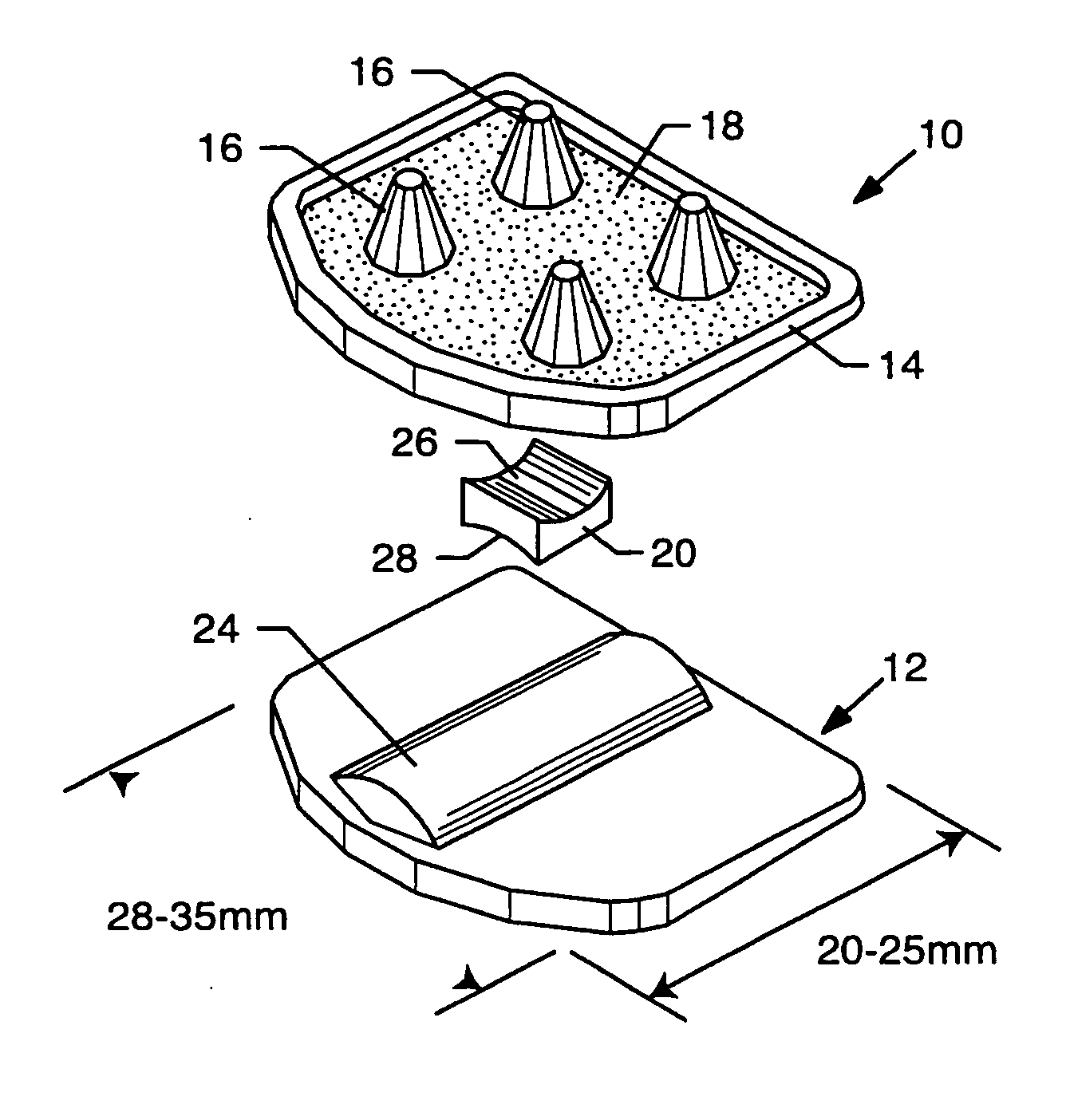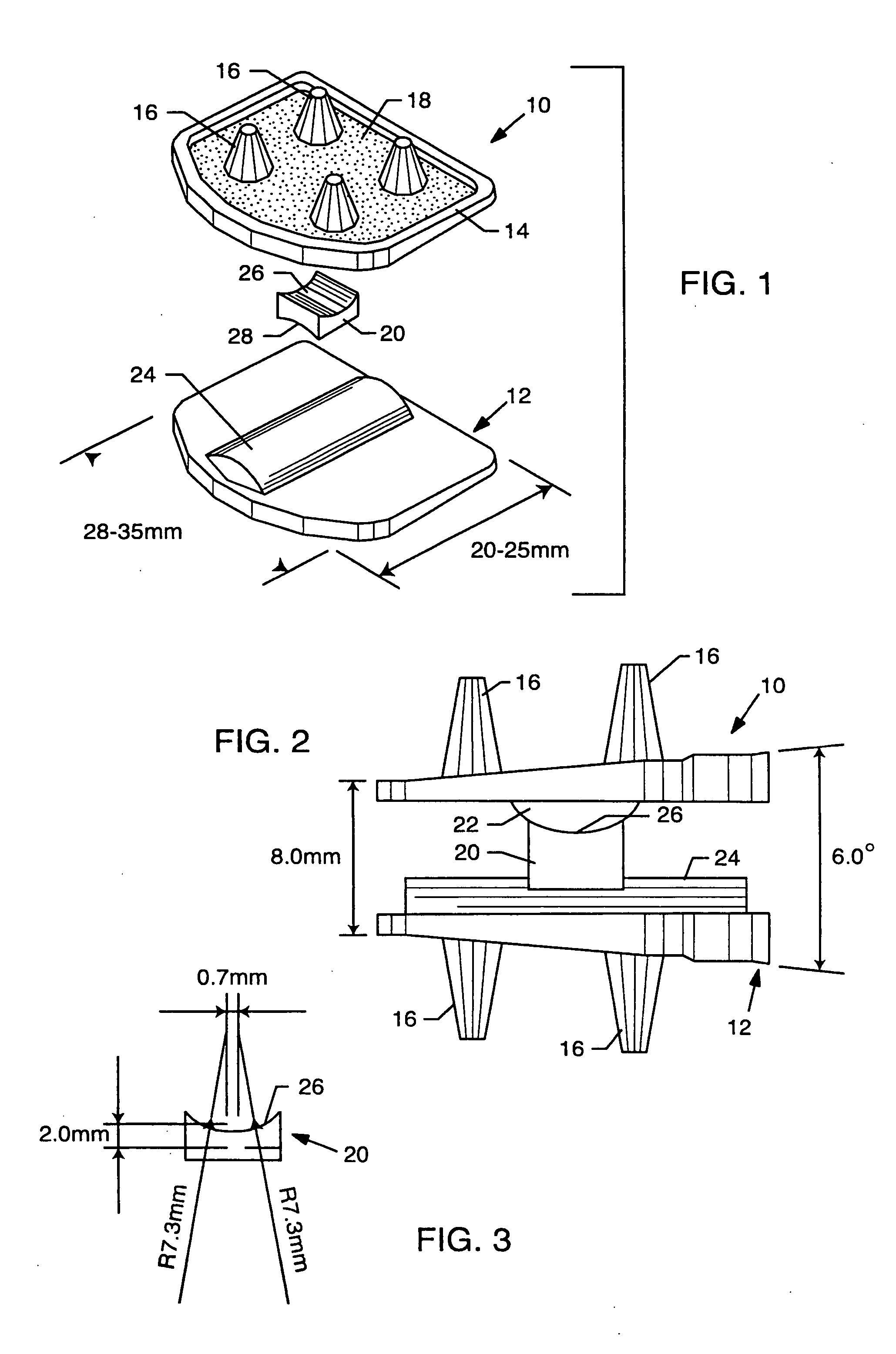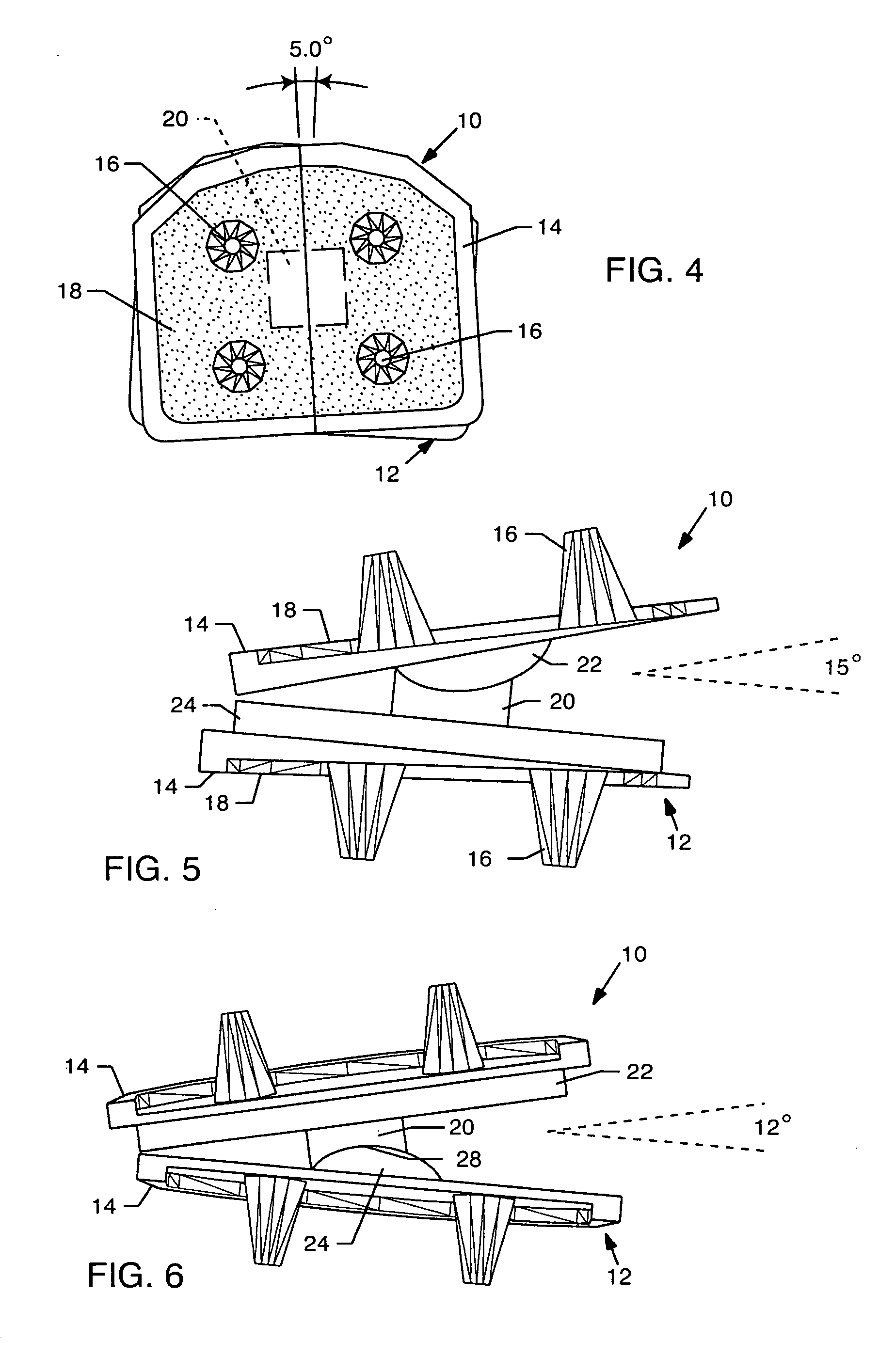Total disc implant
a total disc and implant technology, applied in the field of total disc replacement implants, can solve the problems of preventing the progressive deterioration short-term relief, and almost certain degeneration of the patient's condition
- Summary
- Abstract
- Description
- Claims
- Application Information
AI Technical Summary
Benefits of technology
Problems solved by technology
Method used
Image
Examples
Embodiment Construction
[0045] The TDI design of the present invention is based on the principles of maintaining spine anatomy, restoring function by preserving segmental motion, providing immediate stability, withstanding spine loads safely, and providing rapid osteo-integration between implant / host bone.
[0046]FIGS. 1 and 2 show the proposed TDI design for lumbar spine. The design features an upper end plate 10 and a lower end plate 12 formed respectively with upper and lower surfaces that engage with the adjacent vertebral bodies (not shown). Each end plate 10, 12 includes a solid rim 14 substantially circumscribing the respective upper and lower surface to rest on the cortex of the adjacent vertebral body. Fixation elements such as fins, teeth or pins 16 protrude axially from the respective upper and lower surfaces of the end plates 10, 12 to provide anchoring and immediate stability with the adjacent vertebral bodies. These upper and lower surfaces include or are surface-coated each to define a porous...
PUM
 Login to View More
Login to View More Abstract
Description
Claims
Application Information
 Login to View More
Login to View More - R&D
- Intellectual Property
- Life Sciences
- Materials
- Tech Scout
- Unparalleled Data Quality
- Higher Quality Content
- 60% Fewer Hallucinations
Browse by: Latest US Patents, China's latest patents, Technical Efficacy Thesaurus, Application Domain, Technology Topic, Popular Technical Reports.
© 2025 PatSnap. All rights reserved.Legal|Privacy policy|Modern Slavery Act Transparency Statement|Sitemap|About US| Contact US: help@patsnap.com



